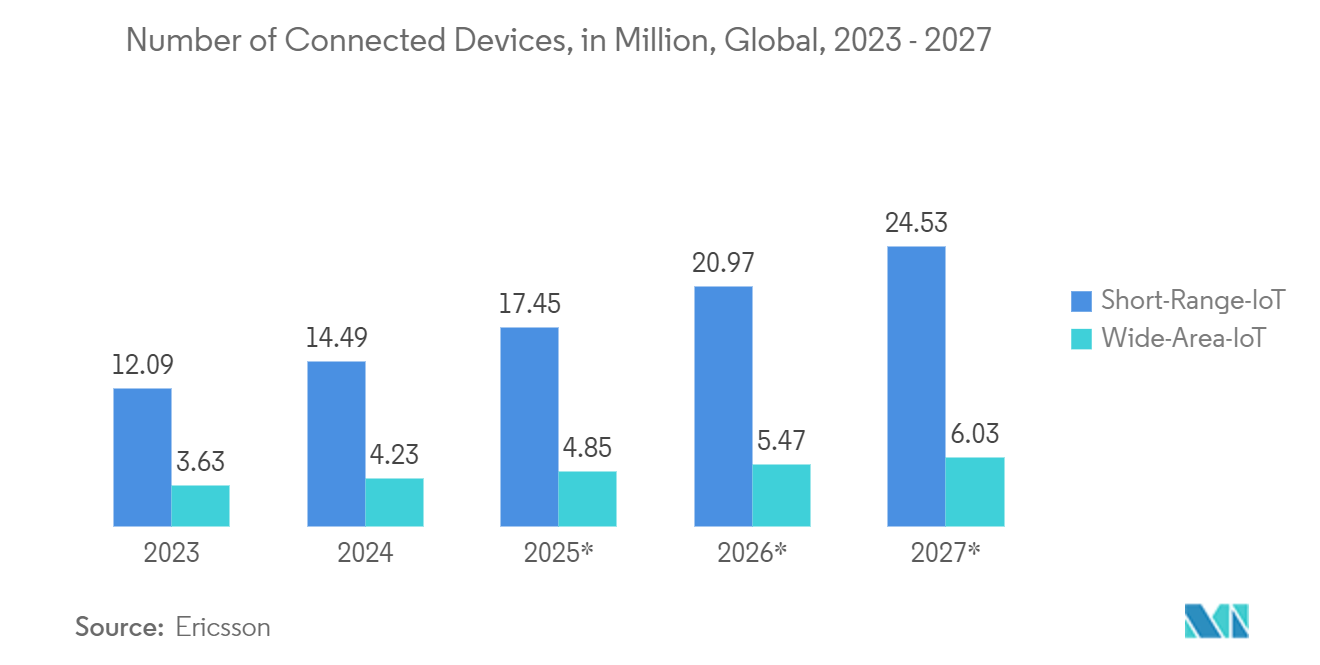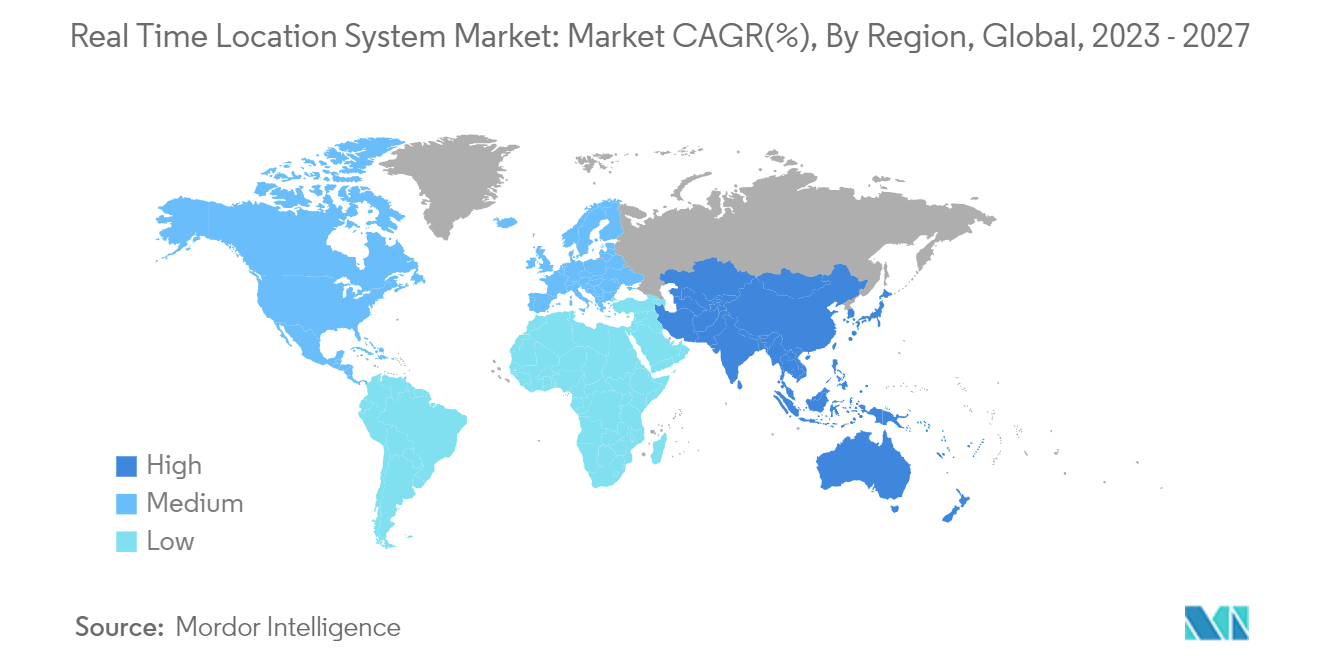Market Trends of Real Time Location System Industry
Healthcare Sector to be the Fastest End-user Vertical
- Real-Time Location Systems (RTLS) have transformed healthcare by enabling precise tracking and management of assets, personnel, and patients. This integration has boosted operational efficiency, elevated patient care, and yielded substantial cost savings.
- In September 2024, Quuppa, the global provider of real-time location systems (RTLS), and ZulaFly, an innovator in healthcare and critical industry asset management solutions, announced a partnership set to redefine the landscape of location-based services. This collaboration brings together two industry players, combining their strengths to deliver unparalleled precision, innovation, and value to businesses worldwide.
- Quuppa's advanced technology, known for its unparalleled accuracy in real-time location tracking, will seamlessly integrate with ZulaFly's advanced asset management and safety solutions. Together, the two companies are poised to create a robust ecosystem that addresses the growing demand for precise, real-time data in environments where safety, efficiency, and security are paramount.
Some of the applications include:
- Asset Tracking and Management: Hospitals and healthcare facilities rely on various medical assets, including infusion pumps, wheelchairs, ventilators, and defibrillators. With RTLS, these assets can be tracked in real-time, minimizing the time spent searching for equipment and ensuring availability when needed. This technology not only prevents asset loss or theft but also optimizes equipment utilization.
- Patient Tracking and Safety: RTLS technology plays a crucial role in monitoring patients, particularly those susceptible to wandering, like individuals with dementia or Alzheimer's. By providing RTLS-enabled wristbands, healthcare providers can monitor patients' real-time locations, ensuring their safety within the facility.
- Staff Workflow Optimization: Optimizing staff workflows in healthcare facilities is vital for enhancing patient care and minimizing operational inefficiencies. RTLS tracks healthcare workers' locations, allowing administrators to allocate resources more effectively, shorten response times, and improve coordination.
- Further, there are various transformative trends which are expected to propel the market. For instance, central to the transformation of the RTLS market is the seamless integration of the Internet of Things (IoT). By harnessing IoT technologies, RTLS delivers accurate, real-time location data, empowering organizations to streamline workflows and boost operational efficiency. The convergence of RTLS and IoT paves the way for advanced asset tracking, inventory oversight, and process refinement across a myriad of sectors, spanning from manufacturing to retail. For instance, according to Ericsson, in 2023, there are 12.09 million short-range IoT devices and 3.63 million wide-area IoT devices.

Asia Pacific to Register Major Growth
Industrial Growth and Automation
- APAC is home to major manufacturing hubs like China, Japan, South Korea, and India. Industries are adopting RTLS to improve operational efficiency, track assets, and optimize workflows. For instance, India's manufacturing sector grew at an average annual rate of 5.2% over the last decade, contributing 14.3% to gross value added and 35.2% to total output in FY23, as per the Economic Survey. This growth highlights its economic importance and is driving demand for real-time location systems in the Asia-Pacific as industries adopt these solutions to optimize operations and improve efficiency. China's manufacturing sector expanded for the first time in six months, with services recovering in October 2024, according to the National Bureau of Statistics.
- Governments and private sectors in APAC are increasingly embracing Industry 4.0, which emphasizes automation, IoT integration, and smart factories, all of which drive RTLS adoption. For instance, Rockwell Automation's latest study revealed in 2023 that 44% of APAC manufacturers plan to adopt smart manufacturing within the next year. Currently, 80% of Chinese manufacturers, 60% of Australian manufacturers, and 59% of Indian manufacturers have already implemented it. Additionally, 88% of APAC manufacturers expect smart manufacturing to sustain or grow employment levels. This shift is likely to drive demand for real-time location systems in the region as manufacturers increasingly rely on advanced technologies to optimize operations and workforce management.
Governmental Support and Infrastructure Development is Expected to Drive the Market Opportunities
- By 2030, the Healthy China 2030 initiative aims to double the nation's health service industry, targeting a valuation of around USD 2.4 trillion.
- Concurrently, India's Union Budget for 2024-25 emphasizes a commitment to healthcare transformation, designating INR 89,287 crores (approximately USD 10.70 billion) to enhance digital infrastructure and improve healthcare accessibility. This focus on healthcare infrastructure and digital transformation is likely to increase the demand for real-time location systems in the Asia-Pacific region, as these systems can support efficient resource management and service delivery in the healthcare sector.
- In 2023, Singapore's container throughput hit 39 million TEUs, marking a slight uptick from 2020, as reported by the Maritime and Port Authority of Singapore. Additionally, UNCTAD highlighted that vessels at Singapore's port boasted an average DWT of 17,224. Singapore's position as a major trading hub, coupled with its high shipping traffic, underscores the need for real-time location systems to optimize operational efficiency. This growing demand for enhanced efficiency is expected to drive the adoption of real-time location systems across the Asia-Pacific region, particularly in logistics and supply chain operations.


